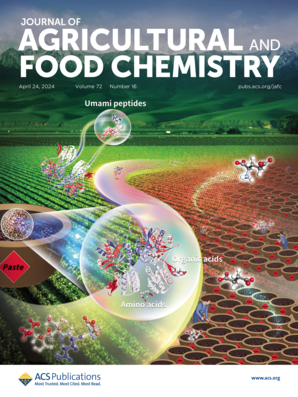Hyperspectral Imaging and Deep Learning for Quality and Safety Inspection of Fruits and Vegetables: A Review
IF 5.7
1区 农林科学
Q1 AGRICULTURE, MULTIDISCIPLINARY
引用次数: 0
Abstract
Quality inspection of fruits and vegetables linked to food safety monitoring and quality control. Traditional chemical analysis and physical measurement techniques are reliable, they are also time-consuming, costly, and susceptible to environmental and sample changes. Hyperspectral imaging technology combined with deep learning methods can effectively overcome these problems. Compared with human evaluation, automated inspection improves inspection efficiency, reduces subjective error, and promotes the intelligent and precise fruit and vegetable quality inspection. This paper reviews reports on the application of hyperspectral imaging technology combined to deep learning methods in various aspects of fruits and vegetables quality assessment. In addition, the latest applications of these technologies in the fields of fruit and vegetable safety, internal quality, and external quality inspection are reviewed, and the challenges and future development directions of hyperspectral imaging technology combined with deep learning in this field are prospected. Hyperspectral imaging combined with deep learning has shown significant advantages in fruit and vegetable quality inspection, especially in improving inspection accuracy and efficiency. Future research should focus on reducing costs, optimizing equipment, personalizing feature extraction, and model generalizability. In addition, the development of lightweight models and the balance of accuracy, the enhancement of the database and the importance of quantitative research should also be brought to attention. These efforts will promote the wide application of hyperspectral imaging technology in fruit and vegetable inspection, improve its practicability in the actual production environment, and bring important progress for food safety and quality management.

高光谱成像与深度学习技术在果蔬质量安全检测中的应用综述
果蔬质量检验与食品安全监测和质量控制息息相关。传统的化学分析和物理测量技术是可靠的,但它们也耗时,昂贵,易受环境和样品变化的影响。高光谱成像技术与深度学习方法的结合可以有效地克服这些问题。与人工评价相比,自动化检测提高了检测效率,减少了主观误差,促进了果蔬质量检测的智能化和精确化。本文综述了高光谱成像技术结合深度学习方法在果蔬品质评价各方面的应用报道。此外,综述了这些技术在果蔬安全、内部质量和外部质量检测等领域的最新应用,并展望了高光谱成像技术结合深度学习在该领域面临的挑战和未来发展方向。高光谱成像与深度学习相结合在果蔬质量检测中具有显著的优势,特别是在提高检测精度和效率方面。未来的研究应集中在降低成本、优化设备、个性化特征提取和模型泛化等方面。此外,还应注意模型的轻量化和准确性的平衡、数据库的增强和定量研究的重要性。这些工作将促进高光谱成像技术在果蔬检验中的广泛应用,提高其在实际生产环境中的实用性,为食品安全和质量管理带来重要进展。
本文章由计算机程序翻译,如有差异,请以英文原文为准。
求助全文
约1分钟内获得全文
求助全文
来源期刊
CiteScore
9.90
自引率
8.20%
发文量
1375
审稿时长
2.3 months
期刊介绍:
The Journal of Agricultural and Food Chemistry publishes high-quality, cutting edge original research representing complete studies and research advances dealing with the chemistry and biochemistry of agriculture and food. The Journal also encourages papers with chemistry and/or biochemistry as a major component combined with biological/sensory/nutritional/toxicological evaluation related to agriculture and/or food.

 求助内容:
求助内容: 应助结果提醒方式:
应助结果提醒方式:


